- News
- Reviews
- Bikes
- Accessories
- Accessories - misc
- Computer mounts
- Bags
- Bar ends
- Bike bags & cases
- Bottle cages
- Bottles
- Cameras
- Car racks
- Child seats
- Computers
- Glasses
- GPS units
- Helmets
- Lights - front
- Lights - rear
- Lights - sets
- Locks
- Mirrors
- Mudguards
- Racks
- Pumps & CO2 inflators
- Puncture kits
- Reflectives
- Smart watches
- Stands and racks
- Trailers
- Clothing
- Components
- Bar tape & grips
- Bottom brackets
- Brake & gear cables
- Brake & STI levers
- Brake pads & spares
- Brakes
- Cassettes & freewheels
- Chains
- Chainsets & chainrings
- Derailleurs - front
- Derailleurs - rear
- Forks
- Gear levers & shifters
- Groupsets
- Handlebars & extensions
- Headsets
- Hubs
- Inner tubes
- Pedals
- Quick releases & skewers
- Saddles
- Seatposts
- Stems
- Wheels
- Tyres
- Health, fitness and nutrition
- Tools and workshop
- Miscellaneous
- Buyers Guides
- Features
- Forum
- Recommends
- Podcast
feature
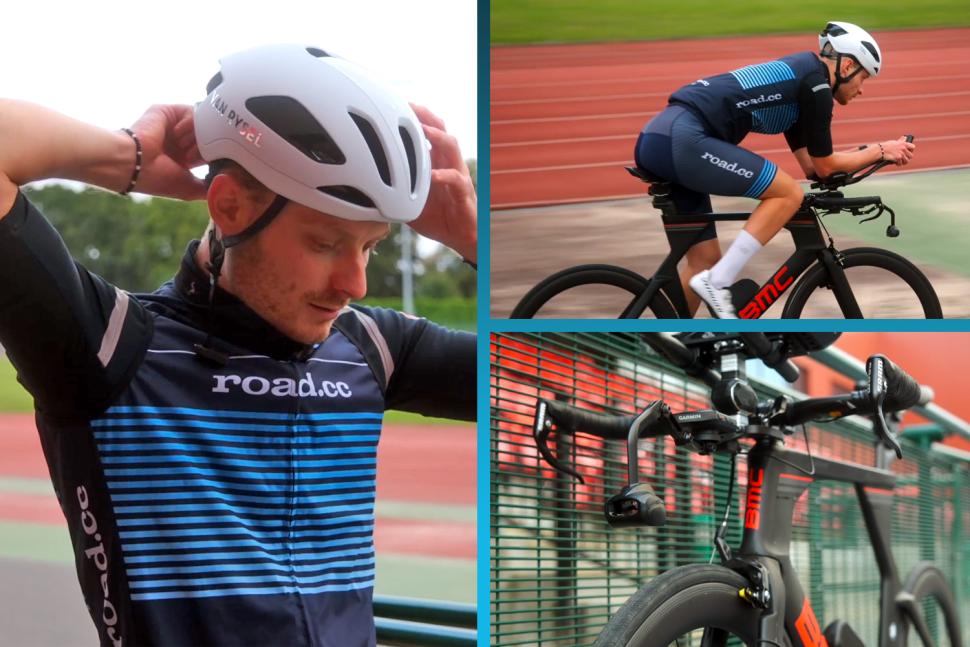 Bodyrocket aero drag system Sept 2024
Bodyrocket aero drag system Sept 2024What we learnt using the "world's first real-time aerodynamic drag force measurement system for cyclists"
The prospect of measuring drag without a wind tunnel has been coming for quite some time now. In fact, we first reported on the Body Rocket system that its creators claim can do just that at the start of 2021. Real-time drag measurement is clearly a tough nut to crack, but with Body Rocket set to open pre-orders in the coming months, is it finally a reality? We were invited to trial the system to find out.
On most bike rides, both weight and rolling resistance pale into near-insignificance compared to aerodynamic drag. Being 'aero' isn't something that's just reserved for the pros, and should be a consideration for anyone looking for additional performance on the bike, whether that be to travel faster or simply more efficiently.
Unfortunately, even knowing your aerodynamic profile is easier said than done. Measuring your CdA (Coefficient of drag) is prohibitively expensive.
> Should you buy an aero road helmet?
For example, Silverstone Sports Engineering Hub is a popular choice in the UK, and yet will set you back around £400 per hour once a technician and VAT have been accounted for.
What do we do then? Just take the manufacturer's aero claims as gospel? No, thank you!
What is the Body Rocket System?
Body Rocket is a device which fits onto your bike in the form of sensors on your seat post, stem and pedals. It can then stream real-time aerodynamic drag force data to a Garmin head unit for analysis post-session.
The idea is that the device is used similarly to a power meter, in that it remains fitted to your bike for use during both training and races. According to Body Rocket, this will not only allow you to see how your position affects your CdA as you ride, but can also help to make "a comprehensive picture of your aerodynamic data which you can analyse to identify incremental improvements", such as when experimenting with different positions, movements and kit.
The system that we used utilised the AeroSensor airspeed sensor, although Body Rocket are trialling multiple options. I used the Aerosensor device earlier this year, and it also claims to be able to tell you your real-time CdA. How does Body Rocket differ?
Eric DeGolier, the CEO and founder of Body Rocket, says: “The alternative systems on the market use a method called Virtual Elevation which takes your power numbers and from there, you know how much energy you are putting out.
"It has to make some estimates about all the other energy losses in the system. That’s rolling resistance and drive train losses. It also assumes that your body weight stays constant, but this does vary over the course of a long event. Only when getting all those guesses right, what is left is your correct CdA.
“We [Body Rocket] are isolating the rider from the bike and looking at just the body."
> The future of going fast? Why live drag sensors might be cycling's next big tech craze
Body Rocket says this is how rolling resistance and drive train friction are completely removed from the equation, and has completed its testing in collaboration with the University of Southampton and its wind tunnel to determine the accuracy of its device.
DeGolier says: “As we are doing the same type of measurement, the actual direct measurement of force, this is the only type of device that you can take into a wind tunnel and measure directly against it.
> Why riders like you need to get more aero
"Other devices rely on back-calculating from a power measurement, and since power is entirely unrelated to wind speed in a wind tunnel all they can do is check to make sure their wind speed measurement equals the wind tunnel."
According to Body Rocket, their device is accurate to 2.5% over a range of different positions.
Using the Body Rocket System
To get a better idea of what real-time drag measurement looks like, I headed off to Reading outdoor velodrome on a bleak Tuesday morning to have a play.
As it stands, Body Rocket is focusing on the launch of the system for time trial and triathlon bikes, but looking at this photo of Kristen Blummenfelt's Giant Propel (above) there is also a road bike version of the system in the works. Body Rocket was tight-lipped on when this might be ready for consumers.
> Kristian Blummenfelt puts ambitious plan to win Tour de France on hold
Rather than simply use the device to improve my horrendous TT position, I was keen to see whether the Body Rocket system could reliably measure the wattage saving when switching equipment. In this case, I selected a ventilated helmet and aero helmet.
You can read the full feature on whether you should buy an aero helmet and find out exactly how much faster one could make you by clicking here.
The test protocol was fairly simple, but if you need some guidance then Body Rocket's AI assistant BRIAiN will happily jump in to help. I rode for 10 minutes to set a baseline and then a further 10 minutes in each helmet, then repeated the test to see if I got the same results (spoiler alert: I did).
While riding the Garmin displayed my ever-changing CdA, so you can react to what the data is showing you in real-time. I can see this being useful in a time trial, where riders often neglect their position as they fatigue.
The Body Rocket system should allow riders to find their optimal position, that is sustainable for the event duration, and flag when they deviate from it. Just like riding to power, we could all be riding to CdA figures in the near future too!
Just like with a power meter the CdA figure does flicker around quite a lot as it's impacted by wind conditions yaw angles so it's better to look at an average, for example, I could see the average CdA for each lap of the velodrome.
Although I haven't been to a wind tunnel to validate the results the numbers that the Body Rocket outputted certainly seem believable and fit with the wattage saving that we expected to find.
How far the CdA value that the Body Rocket system gave me is from the 'true' value I don't know, but after just a few hours of testing I was categorically able to determine that one piece of equipment was faster than another. For performance-minded cyclists and teams, this could be invaluable information.
Post-session, I was greeted by a surprisingly easy-to-interpret Body Rocket dashboard. Here, I can see the CdA for each run as well as the wattage savings this equates to at the speed I was travelling.
Diving deeper, I can see how my weight was distributed on the bike. It's interesting stuff, and useful for determining whether it was an equipment change causing CdA variations rather than my position.
Using the dashboard I'm also able to see my pedalling metrics, similar to a Wattbike, and could see that I slowly crept forward on the saddle over long runs. This data could be very important to pro teams and athletes, and a perk of using Body Rocket over a wind tunnel.
> An air-filled cycling backpack to "reduce drag and "enhance safety" is about to hit Kickstarter
The Body Rocket team were keen to remind me that the system was very accurately measuring my weight at all times. I did kind of wonder why this was necessary, because I know how much I weigh!
It turns out that even on the shallow turns of the track I was around 2kg heavier in the corners than on the straights due to centripetal force. Professional track sprinters can weigh double when cornering on a velodrome, so it's easy to see how guestimating your weight could cause issues!
What I learnt (or was reminded of) using the Body Rocket system in handy bullet point form...
- Real-time, real-world aero testing is coming, and it's not far away at all!
- In my opinion, systems like Body Rocket could revolutionise how pro athletes and teams train/test products over the next few years
- Aero testing is still going to be prohibitively expensive, but we're heading in the right direction
- The Body Rocket system isn't just a replacement for a wind tunnel, it can be used in conjunction with one and/or even give additional data
- Amateur athletes should be looking at their body position A LOT more than they are before even considering buying more 'upgrades'
- The aero revolution is only just getting started!
Let us know what you think of aero measuring systems like Bodyrocket in the comments section below.
Jamie has been riding bikes since a tender age but really caught the bug for racing and reviewing whilst studying towards a master's in Mechanical engineering at Swansea University. Having graduated, he decided he really quite liked working with bikes and is now a full-time addition to the road.cc team. When not writing about tech news or working on the Youtube channel, you can still find him racing local crits trying to cling on to his cat 2 licence...and missing every break going...
Latest Comments
- IanMK 6 sec ago
The story in the Echo is confusing and pirifully short on facts. My take is that it seems that the residents had some expectation that the council...
- Steve K 19 min 36 sec ago
On now (7.53am if you want to listen back) - Jim Waterson is on.
- stonojnr 8 hours 20 min ago
Id argue they had decent brand recognition via the Movistar link up (didnt they sponsor Bigla too ?) and could use that to show they were leading...
- Gbjbanjs 11 hours 15 min ago
Alpine opened a shop near me in Edinburgh a few years ago. Nose bleed prices, even their sale prices were high. Shop was always empty. Closed last...
- mctrials23 12 hours 27 min ago
I know its vindictive but man I want that council to crack down on all the people who are illegally parking on their "driveways". Maybe one night...
- FarehamOxonian 13 hours 11 sec ago
Man who lives behind us was driving in the Petworth, West Sussex area pre-COVID and when cresting the brow of a hill was blinded by the sun...
- chrisonabike 13 hours 8 min ago
Good article....
- Simon E 13 hours 53 min ago
Lorry destroys Chinese takeaway and damages pub in Bayston Hill, near Shrewsbury. The family at the takeaway are now homeless and have lost their...
- hawkinspeter 14 hours 31 min ago
There's kind of a standard for these kinds of devices, but the pin spacing can be different (this link is for a 2.84mm spacing): https://www.ebay...
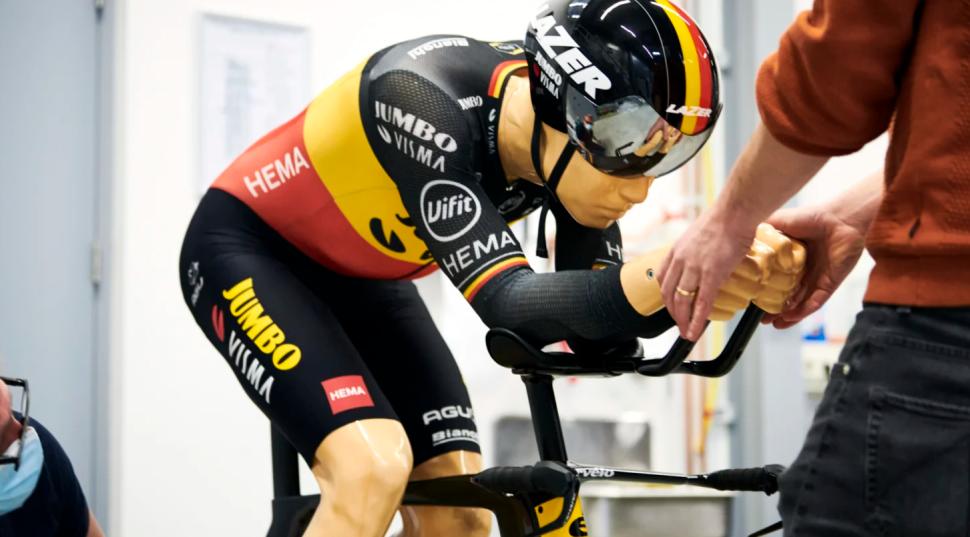
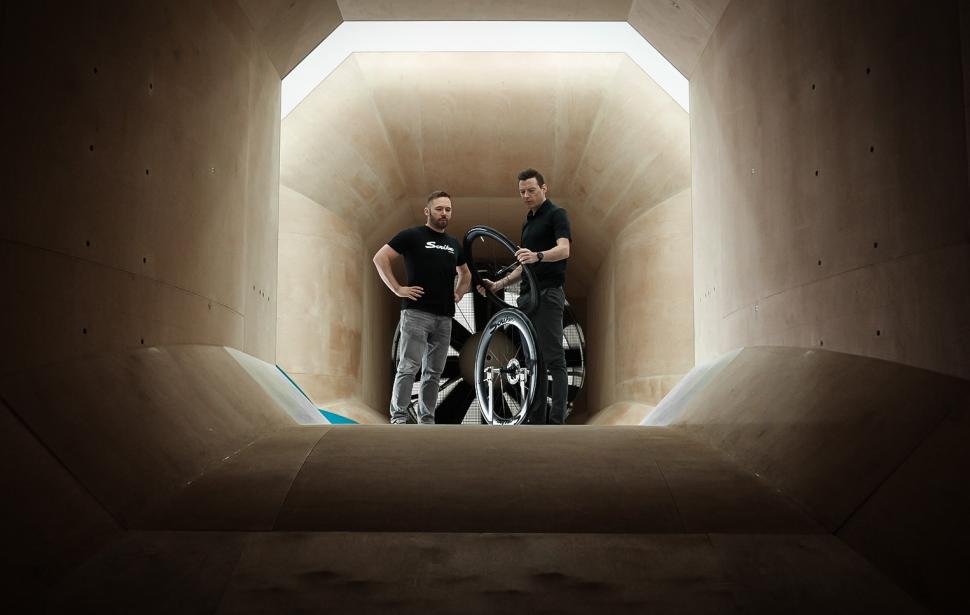




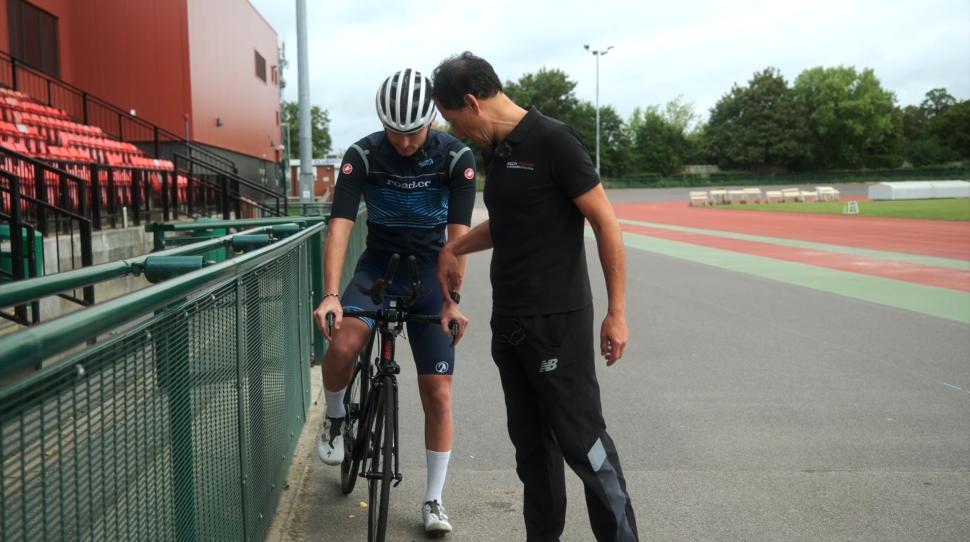




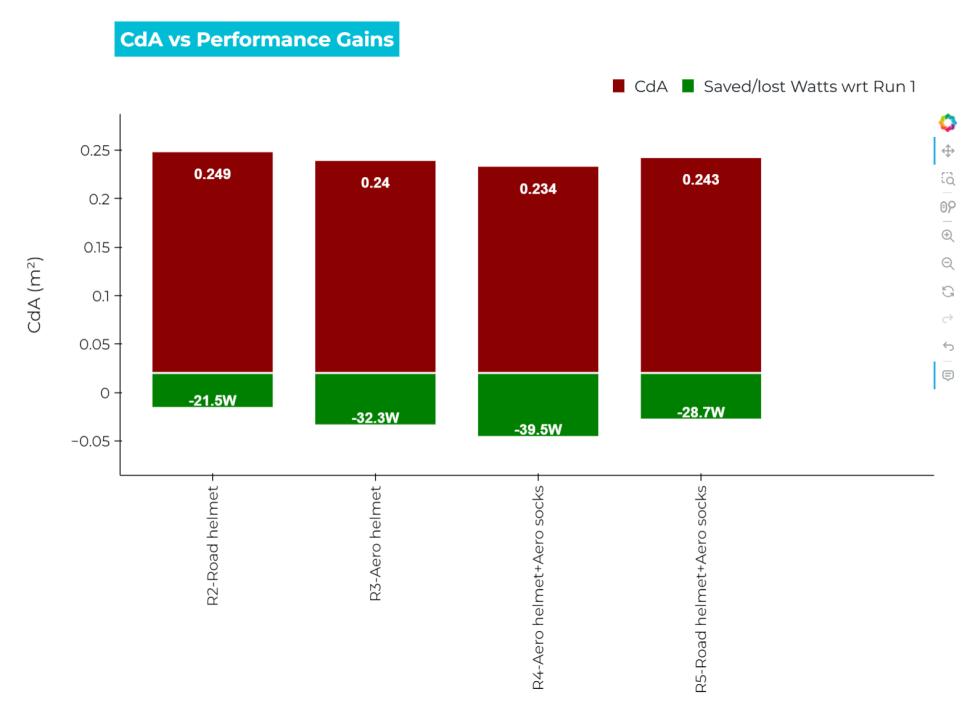



Add new comment
8 comments
So if I understand correctly, this system is measuring the force(s) applied by the rider to the bike, at the primary contact points of the rider on the bike - handlebar, pedals, seat. With some kind of force plate sensor inserted as some kind of shim a) at the stem (you use their stem?) b) a plate between pedals and crank c) a shim between seat and bike seatpost.
Have I got that right?
They seem also to have an airspeed sensor out front of the handlebars.
So they use the force information + the airspeed, to calculate the drag induced by the rider on the bicycle.
Right?
So... this can *not* tell you: the aero benefits of the bike or anything attached to it, wheels most notable (hugely important); the drag induced on the bicycle by the interaction of the airstream of the rider with the bicycle (also kind of important).
It gives some of the picture, but not all.
E.g., if you tested some clothing which made the drag induced on the rider worse, but made the drag induced on the bike /better/, and was overall a /win/ (for sake of argument, some sock or shoe apparel that was intended to create a bigger "shadow" for a draggy component of the bike behind, at the [lesser] expense of some extra rider drag), would be shown as a "loss" by this system, right?
I think you are being too harsh. With the right protocol you can get an extraordinary amount of information with limited means (search for Chung Method to see just how much can be determined with a power meter and a clever plan).
But this article is not about integrating/differenting methods such as Chung's, this is a straightforward system that takes your power input and pitot pressure and spits out your CdA. It is accurate enough to sense differences in position, clothing and equipment, but it cannot say how much drag is due to the rider and how much is due to the bike.
The other stuff is ancillary. The measurement of the forces on the handlebars and saddle does not enter the aerodynamic calculations, it is just a useful indicator of consistency (or changes) in position. Accelerometers inside the airprobe are probably also used to cross-check acceleration, but again will not be part of the aero calculations.
Uhm, you surely need to measure /every/ force the rider is transmitting to the bike, or else how could you calculate the aerodynamic drag?
Without the force on the bars you have no idea how much of the rider's weight and the drag is being exerted on the seat v the bars. Unless you assert essentially 0 of that force is exerted on the bars, which I don't think is true.
I'd be willing to believe nearly all additional force due to drag ended up being exerted on the seat. However, I'd be less willing to believe that 0 of the /weight/ of the rider was exerted on the bars. Further, and probably most importantly, I would think it very possible that he ratio of the forces of drag overall to the force on the bars, has a significant variance over time.
I.e., if I had to bet, I'd say the bar force was important to working out what variance in force felt at the seat post was due to changes in drag and what was due to change in rider position.
"Measuring your CdA (Coefficient of drag)...."
Well, Cd is coefficient of drag. A is frontal area. The two multiplied together (CdA) is the aerodynamic drag.
It doesn't matter which one you reduce, the Cd or the A. What matters is that you reduce their product.
I think you might be missing speed and air density somewhere there.
You're right of course. And whilst you can certainly minimise one, that's hardly the point. Good luck with the other.
When this becomes affordable enough and simple enough to use I can see it becoming a must-have for performance oriented riders. Could lead to some extreme positions I suspect.
Unless you're paid to race for a team, you really don't need to worry about these gimmicks.
Cycling is meant to be a fun past time, too many take it far too seriously.....You can go reasonably fast, and still have fun.